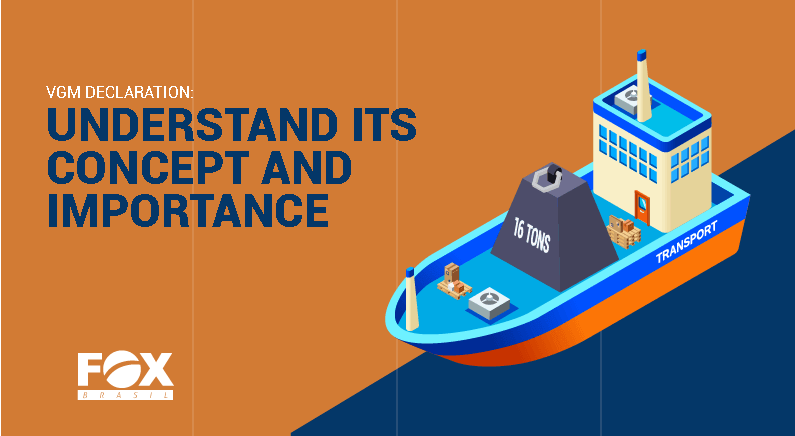VGM declaration: understand its concept and importance

Understand Logistics & Freight
If you conduct any kind of maritime operation, you’ve probably heard of the term Verified Gross Mass or VGM. Basically, the VGM consists of a cargo’s total weight, including package, bracing, and the tare of the container carrying this cargo.
The VGM declaration, on the other hand, is a document stating the Verified Gross Mass of cargo along with a signature (can be electronic) identifying the person responsible for the declared weight. The need for this declaration was stipulated by the International Maritime Organization as part of the Safety of Life at Sea (SOLAS) amendment.
Effective since 1st July 2016, the SOLAS amendment makes it mandatory to declare the Verified Gross Mass of a packed container before loading it on a vessel and getting it ready to be shipped. In other words, a container will no longer be allowed onboard a vessel unless its VGM declaration has been provided by the shipper to the ocean carriers and/or port authorities prior to the prescribed cut-off date.
There are two ways in which a shipper can weight a packed container and get a VGM declaration, as you can see below:
1- Weigh the packed/laden container
2- Weigh all packages, packaging, and add the tare of the weight of the container
Why is the VGM declaration important?
The declaration increases maritime safety and reduces the dangers to cargo, containers, and all those involved in container transportation throughout the supply chain.
By ensuring the shipper provides accurate and reliable weight information to the ocean carrier, the vessel’s stowage can be planned accordingly and there are fewer chances of accidents or injuries caused by inaccurate weight declarations.
Where is VGM mandatory?
This document is necessary for all countries that compose the International Maritime Organization. While usually containers can be weighted at the terminals, this service requires the payment of an additional fee and could possibly lead to congestion and delays.
It is also important to highlight that although the VGM is a global regulation, there is a possibility that different ports and countries have disparate operating requirements.
We hope this content was useful to you. If you wish additional assistance with the planning of your ocean freight demands, count on FOX Brasil! We are leaders in the development of the most cost-effective maritime solutions in the market. Click here to understand more about our ocean freight service and see what makes our solutions innovative and precise.
